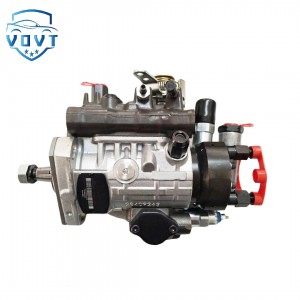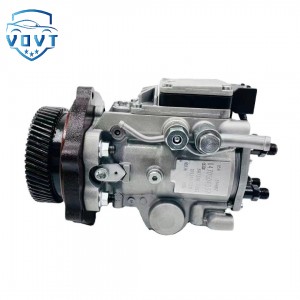Diesel Fuel Injection Pump 21207A-75-750 Engine Auto Engine Part
products description
| Reference Code | 21207A-75-750 |
| MOQ | 1 PCS |
| Certification | ISO9001 |
| Place of Origin | China |
| Packaging | Neutral packing |
| Quality Control | 100% tested before shipment |
| Lead time | 7~15 working days |
| Payment | T/T, Western Union, Money Gram, Paypal, Alipay, Wechat |
Comparative Analysis of the Effects of Different Heat Treatment Processes on Oil Pump Component Performance
Abstract
The performance and service life of oil pump components are closely related to their microstructure and surface mechanical properties, which are significantly influenced by heat treatment processes. This study conducts a comparative analysis of various heat treatment methods—including quenching and tempering, carburizing, nitriding, and induction hardening—on key oil pump parts such as plungers, valve seats, and pump bodies. Mechanical tests, microstructural characterization, and wear experiments were performed to evaluate hardness distribution, residual stress, fatigue resistance, and friction–wear behavior. Results show that carburizing and nitriding treatments improve surface hardness and wear resistance, while maintaining good core toughness. Induction hardening provides an effective gradient transition layer but may induce higher residual stress. Among the tested processes, compound nitriding achieves the best overall balance between surface strength and dimensional stability, extending the expected service life of the pump by over 25%. The findings provide theoretical and experimental guidance for the optimization of heat treatment processes in high-performance oil pump manufacturing.
1. Introduction
Oil pumps operate under high pressure, alternating load, and continuous frictional contact, making their components prone to wear, fatigue, and failure. Proper heat treatment can refine the microstructure, enhance surface hardness, and improve fatigue and corrosion resistance. However, different heat treatment techniques produce distinct microstructural gradients and mechanical responses, which directly affect performance. Therefore, it is essential to compare the effects of multiple heat treatment processes to determine the most suitable one for oil pump components.
2. Experimental Procedure
(1) Materials and Components
Samples were taken from typical oil pump components made of alloy steels such as 20CrMo and 42CrMo. Key test parts include plungers, valve seats, and housings.
(2) Heat Treatment Processes
Four different heat treatment processes were applied:
-
Quenching and tempering (QT): 850°C oil quenching, 200–600°C tempering.
-
Carburizing (CB): 920°C carburizing for 6 h, followed by quenching and low-temperature tempering.
-
Nitriding (NT): 520°C plasma nitriding for 10 h.
-
Induction hardening (IH): Surface heating at 1000–1100°C followed by water quenching.
(3) Testing and Characterization
Microstructure was analyzed by optical and scanning electron microscopy (SEM), hardness was measured by micro-Vickers tests, and surface wear resistance was assessed using a reciprocating wear tester. Residual stress was determined by X-ray diffraction, and fatigue performance was evaluated under cyclic loading.
3. Results and Discussion
(1) Microstructure and Hardness
Carburized and nitrided samples exhibited fine-grained martensitic or diffusion-hardened surface layers with hardness up to 850–1100 HV. Induction-hardened layers showed clear depth gradients (1–2 mm), while quenched–tempered samples had lower but more uniform hardness.
(2) Residual Stress and Fatigue Resistance
Nitrided samples had compressive residual stress beneficial to fatigue resistance. Induction hardening generated tensile residual stress near the surface, increasing the risk of microcracks under cyclic loading.
(3) Friction and Wear Characteristics
Wear tests revealed that carburized and nitrided surfaces had the lowest wear rates and friction coefficients. The QT samples suffered adhesive wear, whereas IH samples showed microcrack-induced spalling. Compound nitriding achieved the most stable friction performance with minimal wear volume.
(4) Performance Summary
| Process | Surface Hardness | Wear Resistance | Fatigue Life | Dimensional Stability | Overall Evaluation |
|---|---|---|---|---|---|
| QT | Moderate | Medium | Medium | Excellent | Balanced |
| CB | High | Excellent | High | Good | Very Good |
| NT | Very High | Excellent | Excellent | Excellent | Best |
| IH | Very High | Good | Moderate | Poor | Limited |
4. Conclusions
-
Different heat treatment processes lead to distinct microstructural and mechanical property distributions in oil pump parts.
-
Carburizing and nitriding effectively enhance surface hardness and wear resistance while maintaining internal toughness.
-
Induction hardening provides localized strengthening but requires stress optimization to prevent cracking.
-
Compound nitriding offers the optimal trade-off between strength, wear resistance, and dimensional stability, making it the preferred process for high-precision oil pump components.























